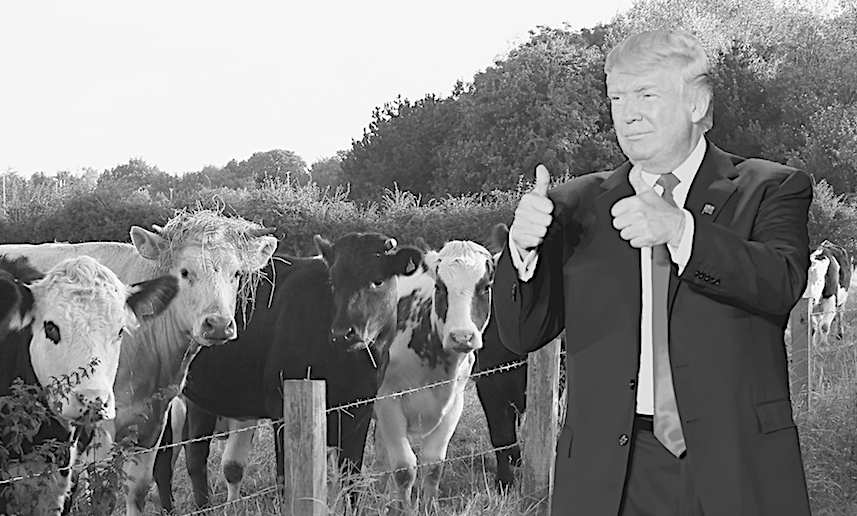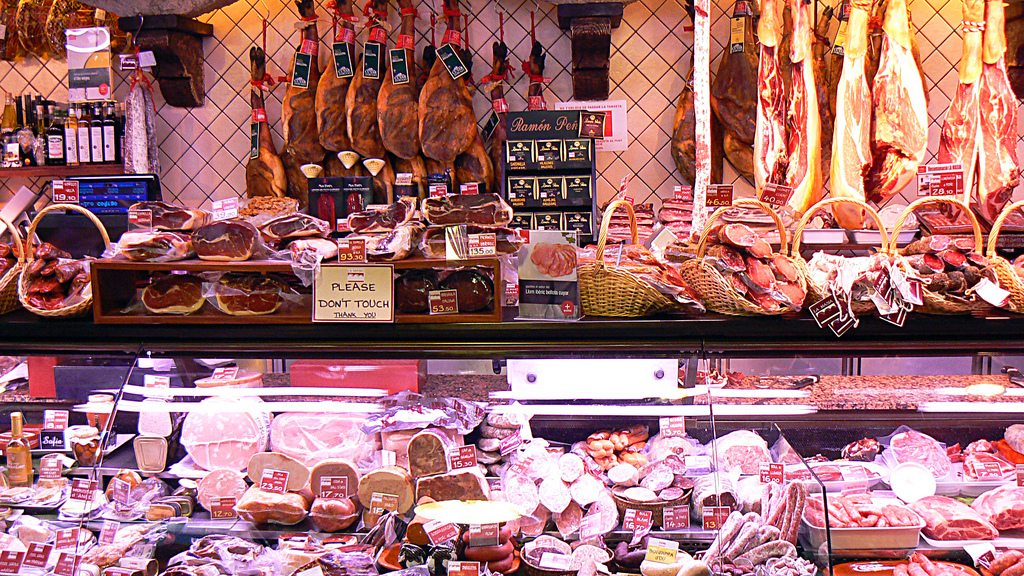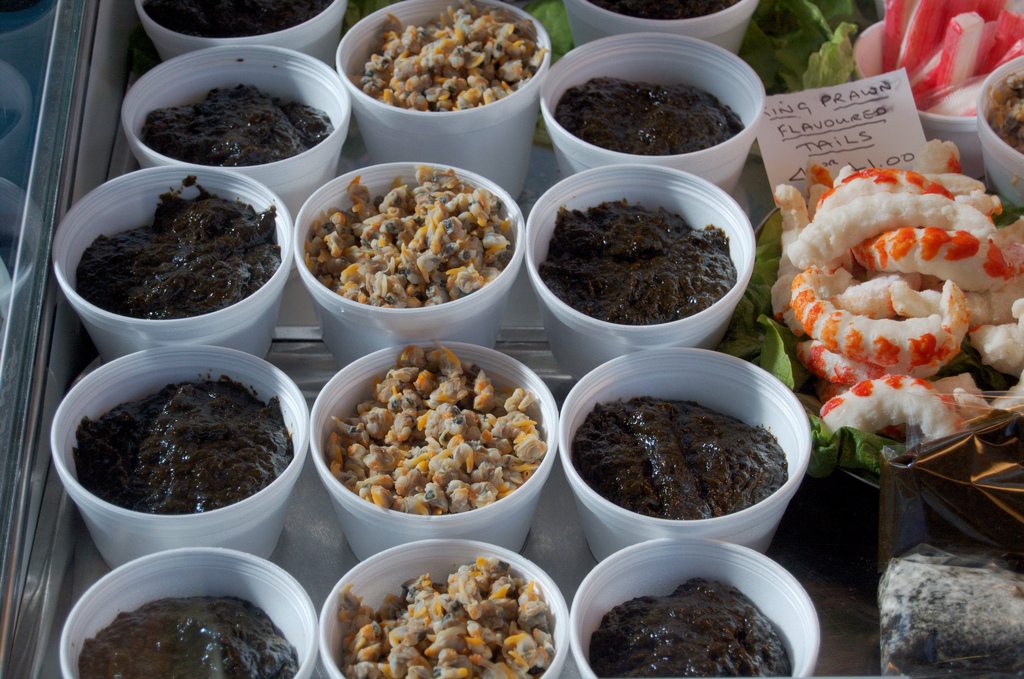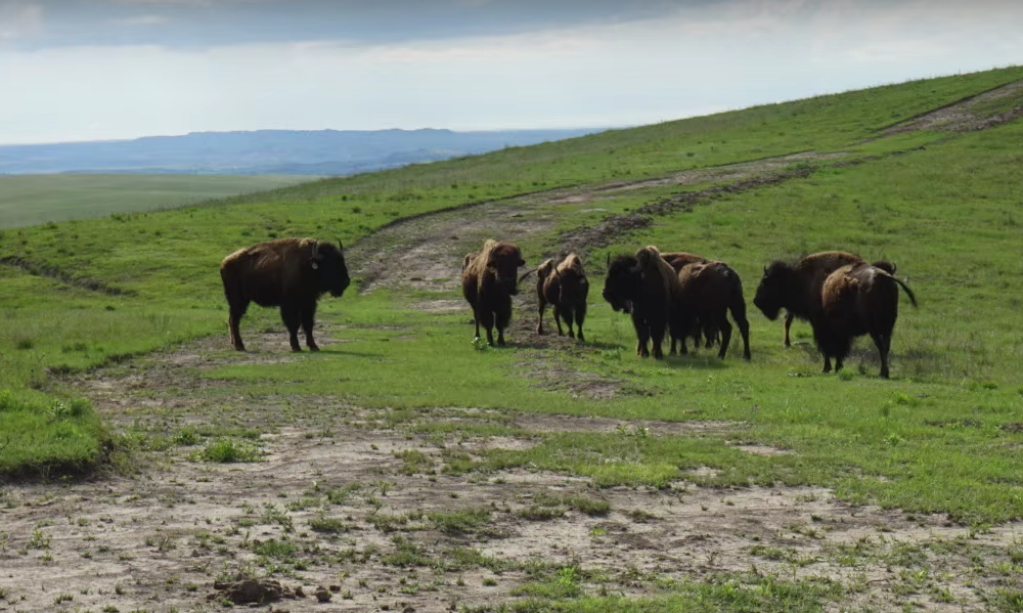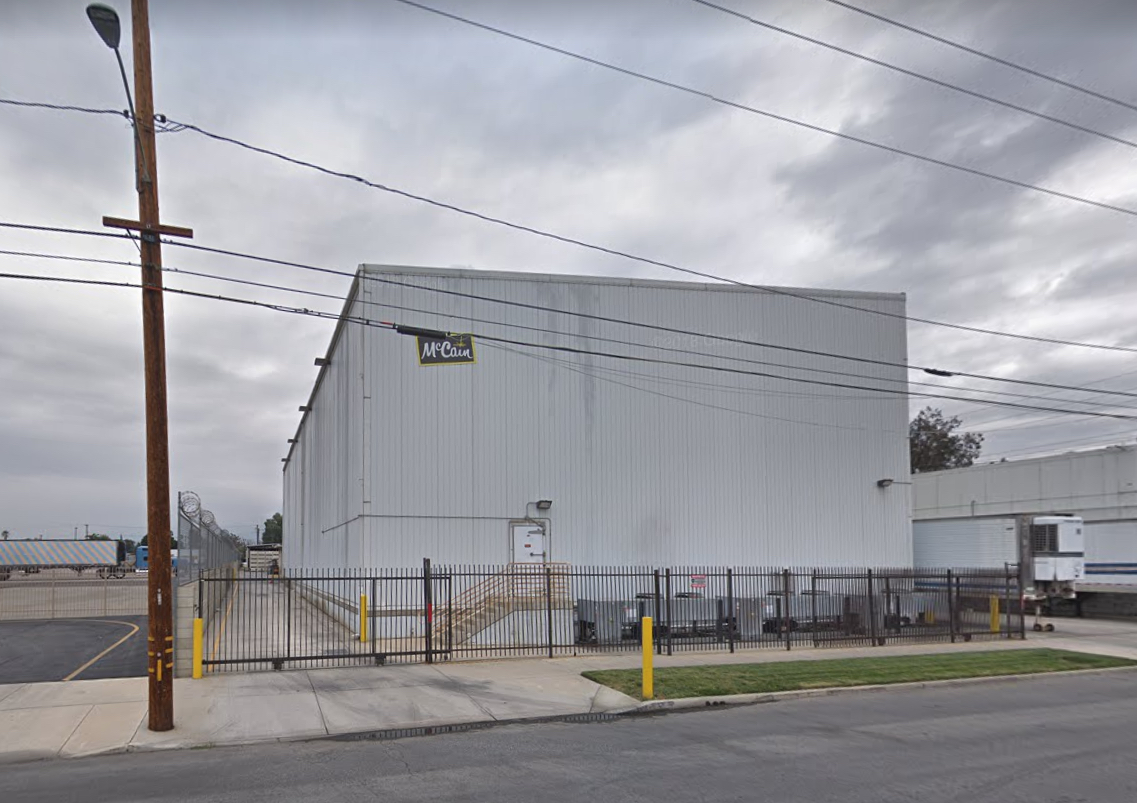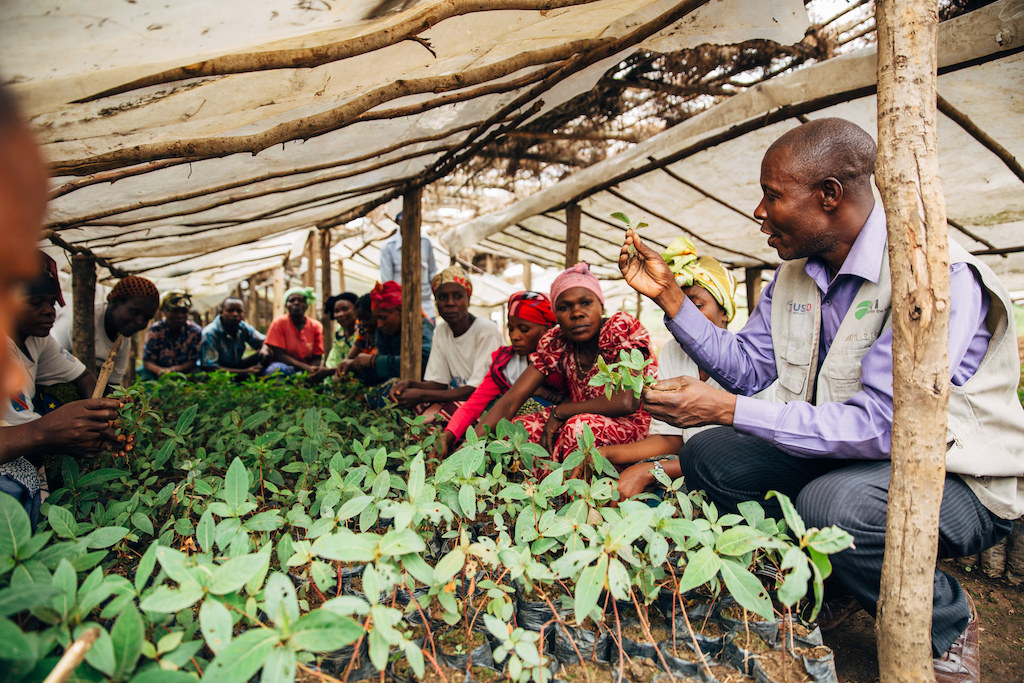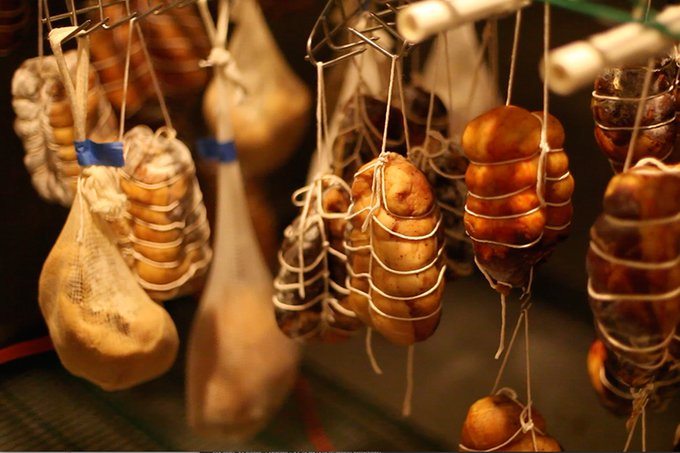
Underground Meats
Chef Jonny Hunter isn’t fond of secrets. When I ask if he’ll reveal what I assume might be proprietary techniques for making handcrafted, European-style sausages at his Madison, Wisconsin–based meat processing facility, Underground Meats, he just laughs. “I don’t really believe in proprietary,” he says. “It’s so funny, people are always like, secret recipe…”
Sharing is part of the Underground ethos. Underground Meats is one of several businesses born from Hunter’s original enterprise, the Underground Food Collective, which began in 2005 as a catering company and eventually yielded Underground Butcher (a whole-animal butchery and retail store), and seasonal-centric eatery, Forequarter.
But it isn’t just food Hunter cares about sharing, it’s information — specifically of the open-source variety. Maybe it’s his academic background in public affairs, or his Wisconsin-by-way-of-Texas ease, or maybe it’s just because teaching himself whole animal butchery in a relative information desert was so damn hard. (Underground was a vegetarian collective until Hunter and his partners, wanting to know more about the community of farms they worked with, taught themselves to raise, slaughter and process pigs.) One way or another, when Underground Meats wanted to scale up from state-inspected facility to USDA-certified meat processor, Hunter saw a sharing opportunity.
“In order to do meat processing you have to have a HACCP [Hazard Analysis and Critical Control Points] plan if you want to have an inspected plant,” Hunter says. “And salami’s a really difficult one and there’s not a ton of information out there.” You don’t typically go out and borrow a HACCP from another producer because many keep theirs on lockdown. It’s understandable. Hiring an outside source to validate techniques and processes to state and federal agencies can cost upwards of $50,000. That’s some seriously expensive intellectual property.
But if Underground needed a dry-cured salami production HACCP plan in order to become USDA-certified, it meant other processors did too. “So, when we broke down the concepts of it,” Hunter says, “I was like, what happens if we could have some sort of open-source food safety where, in the end, there’s a building of knowledge rather than the knowledge just being held in a few consultants’ hands?” Hunter knew if Underground open-sourced its HACCP, expense and exclusivity be damned, there was potential for increased access on both sides of the food system. It would provide other small and medium-sized producers with a procedural model, free of charge. And that, in turn, would bring consumers more handcrafted, traditional charcuterie.
So, the company decided it’d raise the money to create and validate one and then open-source it for other processors to use. Producers and consumers: one. IP hoarders: zero.
Art of the plea: Underground’s HACCP explainer is actually sexy
In 2013, Underground Meats launched a Kickstarter campaign, and with the help of 714 backers, funded nearly $50,000 to create and publish its open-source HACCP plan. Hunter says at least 20 U.S. processors have used the Underground plan to navigate the compliance process, but support also came from people who were just into the sharing economy.
“Open-source” is a new enough term to movements outside the technology sphere (where it typically applies to development of hardware and software code that can be freely used by anyone and distributed under free licenses), that it bears a little unpacking, especially when it comes to food production.
“Most people don’t understand what open-source means,” says Devin Balkind, director at Sarapis, a New York City-based consultancy that develops open-source solutions for the non-profit and civic sectors. “I actually use the example of sharing recipes to talk about the history of open-source from the perspective of things that aren’t code….[that’s] an example of something that society has been engaging in — the open-sourcing of knowledge – for as long as society has existed.”
If you’re a food producer, just swap out recipes for processes and regulatory compliance in the above scenario and it’s easy to see where open-source has possibilities for new food economy practitioners. “I think there’s a lot of procedural knowledge and wisdom in any context where people have to deal with regulations. It makes a lot of sense for there to be sharing of that type of information,” Balkind says. Which is why Hunter’s open-source HACCP—and in fact, Hunter himself as something of an accidental info-sharing icon—has so much appeal to fellow food producers.
“My favorite thing about information sharing is how it can go back and forth. When I put this idea out there some people were like, oh, you’re going to be giving away your intellectual property, which is one of my least favorite terms. I don’t really care about that. If I don’t put this information out there, then I don’t meet that person who comes back to me and helps me,” Hunter says.
Arkansas-based chef Travis McConnell is one of those people. He and a local farmer who backed the Kickstarter campaign were inspired enough by Underground’s open-source mission that they went to Madison to spend a few days helping out in the butcher shop, hanging out in the plant, and acting like a couple of information sponges.
Underneath the philosophical case for open-source ideals is a very practical one—the need to make sure that information isn’t just owned by people who charge for it. “You know, you get pitched from all these food safety consultants that I think don’t necessarily have food safety goals in mind,” Hunter says. “It’s like a closed system.”
It’s true: Food consultants do exceptionally robust business when it comes to developing and implementing food safety compliance plans, though there isn’t necessarily an established (and universally accepted) rate for this kind of work. And with recent changes to small producers’ obligations under the Food Safety Modernization Act, the labor involved can entail a significant financial burden. Online information hub Global Food Safety Research says a food safety consultant can charge anywhere from $100 to $1,000 an hour.
Balkind thinks the Underground open-source experiment was a good first step in opening the system, but it went only halfway. It was missing a forum, an organized online community where users could provide feedback to make the open-source product better. “An open-source project without a community isn’t considered a success. Because the benefit of an open-source project is then that other people come in and give you feedback. That improves the code base, improves the product, improves the hardware. And it’s that feedback that’s kind of the special sauce.”
So the Underground experiment is proof of concept: sharing is good. But it raises the question, why aren’t more producers producing similar open-source projects? There may be a couple good reasons, at least one of which comes down to something no small producer has enough of. “It’s actually not the hardest thing to tackle if there just was more time in the day,” Hunter says.
Most producers can agree ideas are great—and there’s no shortage of them. The food movement’s next conversation should be about how to compress the space between ideas and implementation. And the real question is, who wants to do that?
You thought it would look more complicated. Underground Meat’s surprisingly straightforward HACCP
“The food movement is certainly behind the software movement in regards to making it explicit who’s interested in this type of collaboration and supporting each other as they engage in these types of projects,” says Balkind. “Ultimately you could view the food movement, particularly the artisanal, organic, sustainable, regenerative, style of food movement as one big project and everyone needs to think of themselves as nodes in a network of knowledge sharing.”
The new food economy needs this network sooner than it thinks. It’s not enough to hope the next generation of practitioners will be early stage adopters of the food movement’s processes, techniques, and politics. We should also be hoping that generation knows how to centralize it, where to put it, and what the password is.




